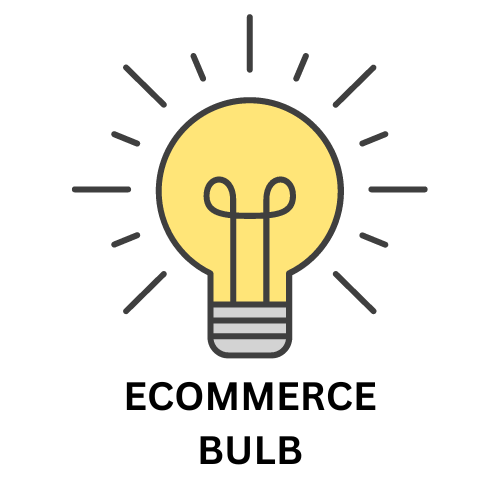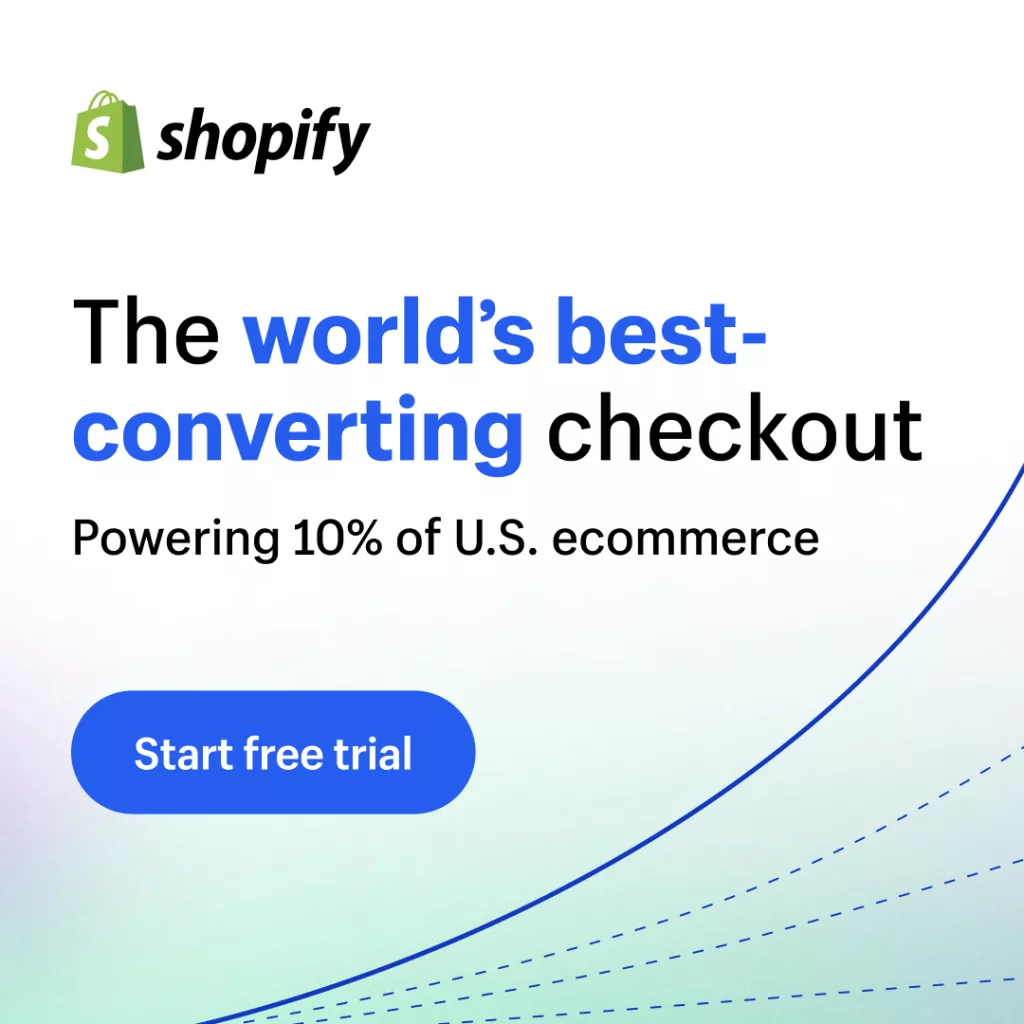In order to decide which ecommerce platform to use, Sellfy vs Adobe Commerce. A detailed comparison between features must be thoroughly done. If you want to decide which eCommerce platform to choose, there are many things to consider.
These are some examples of these factors:
- Cost.
- SEO friendliness.
- Page load speed.
- Canonical website URL.
- Indexing Control.
- Customizable HTML capabilities.
- Sitemap Generator.
- Integration with Google Analytics.
- Product Tagging and Categorization.
- Batch Uploading.
- Mobile Optimization.
- Built-in Blogging and Marketing Features.
- Social Sharing Buttons.
- Content Management Capabilities.
- Discount and promotion code tools.
- Easy to use Checkout.
- Reporting tools and custom reports.
- Integration of email marketing tools.
- Multiple payment options.
- Flexibility to add new eCommerce features.
- Exclusive features.
- Cons and pros.
Here we’ll discuss these factors to help you decide which platform is better for you, Adobe Commerce (Formerly Magento) or Sellfy. And at the end of the discussion, we’ll recap and make a comparison for the scores of all these points to find out which eCommerce platform has the higher score, so that you’ll have a good view about both of them.
Read Further: Top 6 Sellfy Reviews
Pricing (Sellfy vs Adobe Commerce):

Sellfy vs Adobe Commerce Pricing
Choosing between Sellfy and Adobe Commerce (formerly Magento) for your ecommerce platform heavily depends on your needs and budget. Both offer strong features, but cater to different segments and come with varying pricing structures. Here’s a breakdown:
Sellfy:
- Pricing: Starts at $19/month for the Basic plan, offering up to 10GB storage and 1,000 products. Higher tiers unlock features like custom domains, email marketing, and advanced analytics.
- Cost Structure: Simple, subscription-based pricing with no transaction fees. Additional costs involve app purchases and exceeding bandwidth limits.
- Target Audience: Ideal for creators and individuals selling primarily digital products like ebooks, music, software, and online courses. Suitable for beginners with its user-friendly interface.
Adobe Commerce:
- Pricing: Starts at $22,000/year for the Open Source edition, requiring hosting and additional costs for extensions and support. Enterprise edition pricing customized based on needs.
- Cost Structure: Complex, tiered pricing based on edition and transaction volume. Requires additional investments in hosting, extensions, and development resources.
- Target Audience: Best suited for large, established businesses with high-volume traffic and complex product catalogs. Requires technical expertise for setup and customization.
Choosing the Right Platform:
- For budget-conscious businesses and beginners: Sellfy’s lower entry point and simple pricing make it an affordable option. Its user-friendly interface is ideal for those with limited technical knowledge.
- For high-volume stores and complex needs: Adobe Commerce offers superior scalability, customization, and integrations, handling large product catalogs and high traffic efficiently. However, it requires significant technical expertise and financial investment.
- For digital product sales: Sellfy’s features are specifically tailored for managing digital downloads, subscriptions, and content delivery, making it ideal for creators and digital product sellers.
- For physical product sales: Adobe Commerce provides more robust functionalities for managing physical products, inventory, and shipping, catering better to businesses selling tangible goods.
Additional Considerations:
- Transaction fees: Adobe Commerce might involve additional transaction fees depending on your payment gateway choice.
- Development costs: Customizing Adobe Commerce might require hiring developers, adding to the overall cost.
- Learning curve: Adobe Commerce has a steeper learning curve compared to Sellfy’s user-friendly interface.
SEO Capabilities (Sellfy vs Adobe Commerce):

Choosing between Sellfy and Adobe Commerce for your online store’s SEO performance depends on your technical expertise, budget, and desired level of control. Here’s a breakdown of their SEO capabilities:
Sellfy:
- Strengths:
- Built-in SEO features: Offers basic on-page optimization tools like product title and description editing, meta tag generation, and image alt text suggestions.
- Mobile-friendly platform: Google prioritizes mobile-friendliness, and Sellfy’s responsive design ensures your store is optimized for mobile search.
- Simple setup and maintenance: User-friendly interface makes managing SEO basics like title tags and descriptions easier for beginners.
- Weaknesses:
- Limited control: Lacks advanced SEO features like schema markup, custom robots.txt editing, and canonical URL control, limiting optimization strategies.
- Less flexibility: Limited content marketing options like blog integration or custom landing page creation can restrict organic reach.
- Reliance on platform SEO tools: You might not achieve desired levels of optimization without additional resources or external SEO expertise.
Adobe Commerce:
- Strengths:
- Extensive SEO features: Provides deep on-page optimization tools, schema markup customization, robots.txt control, canonical URL control, and structured data for rich search results.
- Content marketing flexibility: Powerful CMS allows creating blog posts, landing pages, and other content for organic reach and keyword targeting.
- Customization and integrations: Integrates with advanced SEO tools and plugins for granular control over optimization strategies.
- Weaknesses:
- Technical complexity: Requires technical expertise or developer resources to navigate advanced SEO features effectively.
- Higher costs: Additional SEO tools and integrations might incur added expenses.
- Steeper learning curve: Not user-friendly for beginners, managing complex SEO features can be challenging without prior knowledge.
Choosing the Right Platform:
- For beginners and basic SEO needs: Sellfy’s built-in tools and user-friendly interface are sufficient for basic on-page optimization and mobile-friendliness.
- For advanced SEO strategies and technical expertise: Adobe Commerce offers extensive control and customizability for in-depth optimization through plugins and integrations.
- For content marketing and organic reach: If content marketing is crucial for your SEO strategy, Adobe Commerce’s CMS flexibility outperforms Sellfy’s limited options.
- For budget-conscious businesses: Sellfy’s lower price point makes it a more cost-effective option for basic SEO needs.
PageLoad Speed (Sellfy vs Adobe Commerce):

Factors Affecting Page Load Speed:
- Platform architecture: Sellfy is a hosted platform, meaning its infrastructure is optimized for speed. Adobe Commerce is self-hosted, so its performance depends on your server configuration.
- Theme and customizations: Heavy themes or custom code can slow down both platforms.
- Product catalog size: Larger catalogs can impact loading times, especially on Adobe Commerce.
- Image optimization: Optimized images are crucial for fast page loads.
- Content Delivery Network (CDN): A CDN can significantly improve load times by distributing content across multiple servers.
- Caching: Caching frequently accessed data can reduce server load and speed up loading.
General Insights:
- Sellfy is generally known for its fast loading times due to its hosted nature and focus on simplicity.
- Adobe Commerce offers more customization and flexibility but can require more optimization for optimal performance.
Recommendations:
- Prioritize image optimization: Use appropriate image formats and sizes.
- Implement a CDN: Distribute content closer to users for faster delivery.
- Enable caching: Store frequently accessed data to reduce server load.
- Choose a lightweight theme: Avoid themes with excessive features or visual elements.
- Minimize custom code: Ensure custom code is well-written and optimized.
- Conduct thorough testing: Use tools like Google PageSpeed Insights to measure page load speed and identify areas for improvement.
Canonical Website URL (Sellfy vs Adobe Commerce):

Here’s a comparison of canonical website URL handling in Sellfy and Adobe Commerce:
Sellfy:
- Single domain: Sellfy stores are hosted on a single domain (e.g., yourstore.sellfy.store), simplifying canonicalization.
- Platform handles canonical tags: Sellfy automatically adds canonical tags to product and category pages, ensuring search engines index the correct URLs.
- Limited customization: You have limited control over canonical URLs, as they’re primarily managed by the platform.
Adobe Commerce:
- Flexibility with domains: You can choose your domain name and structure, offering more control over canonicalization.
- Manual canonical tag management: You’ll need to add canonical tags to product, category, and other pages manually to prevent duplicate content issues.
- Customization options: You have greater control over canonical URLs, allowing for advanced SEO strategies.
Key Considerations:
- Sellfy: Simpler for those less familiar with SEO, as the platform handles most canonicalization.
- Adobe Commerce: Provides more flexibility and control for those with SEO expertise.
- Structured data: Both platforms allow you to implement structured data (e.g., schema.org) to further clarify canonical URLs to search engines.
Indexing Control (Sellfy vs Adobe Commerce):

Sellfy:
- Limited control: Sellfy offers basic options for controlling indexing:
- Robots.txt: You can edit the robots.txt file to manage crawling behavior of search engines.
- Meta robots tags: You can add “noindex” tags to individual pages to prevent them from being indexed.
- No fine-grained control: You cannot control indexing at a more granular level, such as specific product variations or attributes.
Adobe Commerce:
- Extensive control: Adobe Commerce provides extensive options for managing indexing:
- Robots.txt: Full control over the robots.txt file.
- Meta robots tags: Ability to add “noindex” tags to pages, categories, products, and other content.
- Sitemap generation: Generate and submit XML sitemaps to guide search engines to your content.
- SEO extensions: Access to various extensions that offer advanced indexing control features.
- Developer flexibility: Developers can customize indexing behavior through code.
Key Considerations:
- Sellfy prioritizes simplicity: Suitable for those who prefer a more hands-off approach to SEO.
- Adobe Commerce offers flexibility: Ideal for those who need fine-grained control over indexing for specific SEO strategies.
- Technical expertise: Adobe Commerce’s advanced features may require more technical understanding or assistance from a developer.
Customizable HTML Capabilities (Sellfy vs Adobe Commerce):

Here’s a comparison of customizable HTML capabilities in Sellfy and Adobe Commerce:
Sellfy:
- Limited customization:
- Basic HTML editing within product descriptions and landing pages.
- No direct access to theme files for extensive customization.
- Ability to inject custom code snippets for tracking pixels or basic JavaScript.
Adobe Commerce:
- Extensive customization:
- Full control over theme files using HTML, CSS, and JavaScript.
- Create custom page layouts, design elements, and interactive features.
- Integrate with third-party tools and services using custom code.
- Develop custom extensions to extend functionality further.
Key Considerations:
- Sellfy: Prioritizes ease of use and simplicity, offering limited HTML customization options.
- Adobe Commerce: Provides developers and designers with extensive control over the storefront’s look, feel, and functionality.
- Technical expertise: Adobe Commerce’s flexibility requires a greater understanding of web development languages and best practices.
Best Practices:
- Align with goals: Assess your specific customization needs and technical capabilities before choosing a platform.
- Prioritize user experience: Ensure any customizations enhance user experience and align with your brand.
- Follow best practices: Adhere to coding standards and SEO guidelines for optimal performance.
- Test thoroughly: Test any custom code or modifications to prevent errors or conflicts.
In summary:
- Choose Sellfy if you’re comfortable with basic HTML editing and prioritize ease of use over extensive customization.
- Choose Adobe Commerce if you need complete control over your storefront’s design and functionality, and have the technical expertise or resources to implement custom code.
Sitemap Generators (Sellfy vs Adobe Commerce):

Here’s a comparison of sitemap generator features in Sellfy and Adobe Commerce:
Sellfy:
- Automatic sitemap generation: Sellfy automatically generates a basic XML sitemap, including product and category pages.
- No manual control: You cannot customize the sitemap or create additional sitemaps for specific content types.
- Limited customization: You can only submit your sitemap to search engines through your Sellfy dashboard.
Adobe Commerce:
- Built-in sitemap generator: Adobe Commerce includes a robust sitemap generator that allows you to:
- Create multiple sitemaps for different content types (products, categories, blog posts, etc.).
- Customize sitemap frequency and priority settings.
- Include or exclude specific URLs.
- Generate sitemaps in various formats (XML, HTML, RSS).
- Submit sitemaps to search engines manually or through extensions.
Key Considerations:
- Sellfy prioritizes simplicity: Suitable for those who prefer a hands-off approach to sitemap management.
- Adobe Commerce offers flexibility: Ideal for those who need more control over sitemap structure, customization, and submission.
- Technical expertise: Adobe Commerce’s advanced features may require some technical knowledge or assistance from a developer.
Best Practices:
- Generate comprehensive sitemaps: Ensure your sitemaps include all relevant pages for optimal search engine discovery.
- Submit to search engines: Submit your sitemaps to Google Search Console and Bing Webmaster Tools to aid crawling and indexing.
- Keep sitemaps updated: Regularly update sitemaps as you add or remove content to maintain accuracy.
- Monitor sitemap health: Use tools to check for errors or issues with your sitemaps.
Additional Considerations:
- Large or complex stores: Adobe Commerce’s advanced sitemap features become more essential for managing large product catalogs, multi-store setups, or dynamic content.
- SEO strategies: Customizable sitemaps can support specific SEO strategies, such as prioritizing certain content or managing crawl budget.
In summary:
- Choose Sellfy for basic sitemap generation if you prioritize ease of use and have straightforward needs.
- Choose Adobe Commerce for comprehensive sitemap control and customization, especially if you have a large or complex store and specific SEO requirements.
Integration With Google Analytics (Sellfy vs Adobe Commerce):

Both Sellfy and Adobe Commerce offer integration with Google Analytics, but the level of depth and flexibility differs:
Sellfy:
- Native integration: Easy setup with your Google Analytics ID.
- Automatic tracking: Tracks basic events like product views, purchases, and add-to-cart actions.
- Limited customization: No access to custom dimensions or event tracking.
- Suitable for: Simple setups where basic sales data is sufficient.
Adobe Commerce:
- Advanced integration: Requires manual configuration with Google Analytics account and setting up Enhanced Ecommerce.
- Detailed tracking: Tracks extensive data like product impressions, clicks, add-to-carts, checkouts, conversions, and more.
- Custom dimensions and events: Enables tracking specific user behavior and marketing campaign performance.
- Retargeting options: Facilitates retargeting campaigns based on user activity in your store.
- Suitable for: Complex setups requiring in-depth sales and user behavior analysis.
Key Considerations:
- Technical expertise: Adobe Commerce integration requires more technical knowledge or developer assistance.
- Data needs: Consider what level of detail you need in your analytics reports.
- Marketing goals: Analyze if retargeting and advanced campaign tracking are important for your strategy.
Additional Integration Options:
- Both platforms: Connect with Google Analytics through third-party tools like Zapier or Workload for deeper customization and automation.
Best Practices:
- Set up goals and conversions: Track important metrics for your business objectives.
- Regularly monitor reports: Analyze data to understand user behavior and optimize your store.
- A/B test different elements: Use insights to improve your store’s performance.
Recommendation:
- Choose Sellfy: If you’re starting out and need basic sales data, Sellfy’s simple integration is sufficient.
- Choose Adobe Commerce: If you have a complex store and require detailed analytics for advanced marketing strategies, Adobe Commerce offers greater flexibility and customization.
Product Tagging and Categorization (Sellfy vs Adobe Commerce):

Sellfy:
- Basic categorization:
- Organize products into categories and subcategories.
- No option for multi-level categorization.
- Limited tagging:
- Add basic tags to products for simple filtering.
- No advanced tagging features for creating dynamic product collections.
Adobe Commerce:
- Advanced categorization:
- Create unlimited categories and subcategories in a hierarchical structure.
- Assign multiple categories to a single product for flexible organization.
- Robust tagging:
- Add multiple tags to products for granular filtering.
- Use tags for creating dynamic product collections, featured products, and personalized recommendations.
- Leverage tagging for advanced search and navigation.
Key Considerations:
- Sellfy prioritizes simplicity: Suitable for smaller stores with straightforward product organization needs.
- Adobe Commerce offers flexibility and power: Ideal for larger stores with diverse product catalogs, complex categorization requirements, and personalized shopping experiences.
- Technical expertise: Adobe Commerce’s advanced features may require some technical knowledge or assistance from developers.
Best Practices:
- Plan categorization structure: Develop a logical and user-friendly category structure that aligns with your product catalog and user expectations.
- Use consistent tagging: Apply tags strategically to enhance discoverability and enable dynamic product groupings.
- Incorporate SEO: Choose category and tag names that align with relevant keywords to boost search visibility.
- Regularly review and update: Ensure categorization and tagging remain relevant as your product catalog evolves.
Additional Considerations:
- Third-party integrations: Sellfy offers limited integrations for product organization, while Adobe Commerce has a vast marketplace of extensions that can enhance categorization and tagging capabilities.
- Custom development: Adobe Commerce allows for custom development to create tailored product organization solutions if needed.
In summary:
- Choose Sellfy if you have a small catalog and require straightforward product categorization and tagging.
- Choose Adobe Commerce if you have a large or complex catalog, need advanced tagging features for dynamic product collections, or want to create personalized shopping experiences.
Batch Uploading (Sellfy vs Adobe Commerce):

Sellfy:
- Limited batch uploading:
- No built-in feature for uploading multiple products simultaneously.
- Workaround: Use CSV import for basic product data, but limited customization and potential formatting issues.
Adobe Commerce:
- Robust batch uploading:
- Built-in functionality to upload multiple products in a single file, saving time and effort.
- Supports various file formats (CSV, XLSX, XML).
- Comprehensive mapping options to match product data to store fields accurately.
- Ability to create templates for recurring uploads.
- Import multiple product attributes, images, variations, and inventory information.
Key Considerations:
- Catalog size and complexity: Adobe Commerce’s batch uploading is essential for managing large or frequently updated catalogs, while Sellfy’s workaround might suffice for smaller stores with infrequent product additions.
- Technical expertise: Adobe Commerce’s advanced features may require some technical knowledge or assistance from developers.
Best Practices:
- Prepare data carefully: Ensure product information is accurate and formatted correctly in the upload file.
- Map fields precisely: Match product data to store fields to avoid errors and ensure proper display.
- Test before full import: Upload a small sample to identify any issues before committing to a full import.
- Monitor import progress: Track the upload process to ensure successful completion.
Additional Considerations:
- Third-party integrations: Consider third-party tools for Sellfy if batch uploading is frequently needed, but they may incur additional costs or complexities.
- Custom development: Adobe Commerce allows for custom development of tailored batch uploading solutions if required.
In summary:
- Choose Sellfy if you have a small catalog, infrequent product additions, and can manage with manual uploads or basic CSV imports.
- Choose Adobe Commerce if you have a large or frequently updated catalog, require efficient batch uploading, and need flexibility for complex product data management.
Mobile Optimization (Sellfy vs Adobe Commerce):

Both Sellfy and Adobe Commerce offer mobile-optimized storefronts, but their approaches and capabilities differ:
Sellfy:
- Mobile-responsive by default: All Sellfy themes are inherently responsive and adapt to various screen sizes.
- Limited customization: Less control over mobile-specific design elements and functionalities.
- Simpler setup: Easier to manage mobile optimization without extensive adjustments.
Adobe Commerce:
- Flexible customization: Extensive control over mobile storefront design and functionalities through themes and extensions.
- Theme variations: Dedicated mobile themes or specific theme modules for mobile optimization.
- Advanced features: Leverage features like mobile-specific banners, promotions, and menus.
- Technical expertise required: More technical knowledge or developer assistance might be needed for advanced customizations.
Key Considerations:
- Technical skills: Choose Sellfy if you prefer a simple setup and have limited technical expertise.
- Customization needs: Go with Adobe Commerce if you require extensive control over mobile experience and design.
- Target audience: Consider your mobile traffic volume and prioritize mobile optimization accordingly.
Best Practices:
- Test across devices: Ensure your storefront looks and functions well on various mobile devices and screen sizes.
- Optimize loading speed: Prioritize fast loading times for a smooth mobile shopping experience.
- Focus on user experience: Design your mobile storefront for easy navigation and accessibility.
- Monitor mobile analytics: Track mobile traffic and user behavior to identify areas for improvement.
Additional Considerations:
- Third-party extensions: Both platforms offer mobile-specific extensions for further optimization and functionalities.
- Progressive Web Apps (PWAs): Adobe Commerce supports building PWAs for a more app-like mobile experience (not available in Sellfy).
In summary:
- Choose Sellfy: If you have a basic mobile optimization need and limited technical expertise, Sellfy’s built-in responsiveness is sufficient.
- Choose Adobe Commerce: If you prioritize extensive customization, advanced mobile features, and cater to a significant mobile audience, Adobe Commerce offers greater flexibility and control.
Built-in Blogging & Marketing Features (Sellfy vs Adobe Commerce):

Sellfy:
- Basic blogging: Create and publish blog posts within the platform.
- Limited formatting options: Fewer customization options for blog design and layout.
- Simple marketing tools: Email marketing with basic automation, discount codes, and analytics.
- Suitable for: Beginners who need basic blogging and marketing functionalities.
Adobe Commerce:
- Rich blogging platform: More comprehensive features for content creation, scheduling, and SEO optimization.
- Advanced design options: Customize blog layout, branding, and visual elements.
- Robust marketing tools: Extensive suite including email marketing, loyalty programs, promotions, social media integration, SEO tools, and analytics.
- Suitable for: Businesses with serious content marketing and promotional strategies.
Key Considerations:
- Blogging focus: Choose Sellfy if basic blog functionality suffices, and Adobe Commerce if you need a dedicated platform for content marketing and SEO.
- Marketing needs: Decide whether Sellfy’s basic tools cover your requirements, or if Adobe Commerce’s advanced features are necessary for complex campaigns and customer engagement.
- Technical expertise: Adobe Commerce’s marketing tools may require more technical knowledge or marketing expertise to utilize effectively.
Best Practices:
- Create high-quality content: Regularly publish valuable and engaging blog posts to attract and retain customers.
- Utilize marketing tools: Leverage available features to segment your audience, personalize campaigns, and track performance.
- Integrate with other platforms: Connect your store with social media, email marketing tools, and analytics platforms for broader reach and insights.
Additional Considerations:
- Third-party extensions: Both platforms offer additional marketing extensions for specific needs and advanced functionalities.
- Budget: Adobe Commerce typically requires a higher investment compared to Sellfy, including potential costs for extensions and marketing expertise.
In summary:
- Choose Sellfy: If you have basic blogging needs and prefer a simple, affordable platform with easy-to-use marketing tools, Sellfy is a good fit.
- Choose Adobe Commerce: If you prioritize a robust blogging platform, advanced marketing capabilities, and extensive customization options for content and customer engagement, Adobe Commerce offers greater flexibility and power.
Social Sharing Buttons Availability (Sellfy vs Adobe Commerce):

Both Sellfy and Adobe Commerce offer options for integrating social sharing buttons into your product pages, but the features and flexibility differ:
Sellfy:
- Built-in social sharing buttons: Provides basic buttons for popular platforms like Facebook, Twitter, Pinterest, and LinkedIn.
- Limited customization: Fewer options to customize the button style, placement, and sharing functionality.
- Easy to use: Simple setup without requiring complex configuration.
Adobe Commerce:
- Flexible options: You can choose from various native social sharing buttons or install extensions for more platforms and functionalities.
- Customization control: Customize button design, location, and behavior (e.g., pop-up sharing, share counts).
- Advanced features: Utilize extensions for social login, targeted sharing based on user segments, and integration with social media marketing tools.
Key Considerations:
- Social media focus: Choose Sellfy if basic sharing buttons suffice for your social media presence.
- Customization needs: Opt for Adobe Commerce if you require extensive control over button design, placement, and functionality.
- Technical expertise: Adobe Commerce extensions might require some technical knowledge or developer assistance.
Best Practices:
- Strategically place buttons: Make sharing buttons easily accessible on product pages and blog posts.
- Customize for optimal engagement: Adjust button design and text to match your brand and encourage sharing.
- Track sharing activity: Monitor social media analytics to understand your audience engagement and campaign performance.
Additional Considerations:
- Third-party extensions: Both platforms offer a variety of social sharing extensions with advanced features and integrations.
- Theme selection: Some Adobe Commerce themes might include pre-designed social sharing buttons.
In summary:
- Choose Sellfy: If you have a basic social media presence and prefer a simple setup, Sellfy’s built-in buttons are convenient.
- Choose Adobe Commerce: If you prioritize extensive customization, advanced sharing functionalities, and integrations with social media marketing tools, Adobe Commerce offers greater flexibility and control.
Content Management Capabilities (Sellfy vs Adobe Commerce):

When it comes to content management capabilities, Sellfy and Adobe Commerce cater to different needs:
Sellfy:
- Basic content creation: Focuses on product descriptions, landing pages, and blog posts.
- Simple editing tools: WYSIWYG editor for easy content creation without complex coding.
- Limited customization: Fewer options for design and layout adjustments.
- Suitable for: Sellers with basic content needs and minimal customization requirements.
Adobe Commerce:
- Robust content management system (CMS): Offers flexible page creation, including static pages, blog posts, categories, and custom layouts.
- Advanced editing tools: Visual drag-and-drop editor, rich text editing, and HTML/CSS access for developers.
- Extensive customization: Fine-tune design elements, branding, and page templates for unique experiences.
- 3rd party integrations: Connect with marketing automation tools, CRM platforms, and analytics for enhanced content management.
- Suitable for: Businesses with complex content needs requiring flexibility, customization, and integrations.
Key Considerations:
- Content strategy: Choose Sellfy if basic product descriptions and blog posts suffice. Go with Adobe Commerce if you need diverse content types, intricate page layouts, and advanced customizations.
- Technical expertise: Adobe Commerce’s advanced features may require technical knowledge or developer assistance.
- Scalability: Consider future content needs and potential growth. Adobe Commerce offers greater scalability for expanding content requirements.
Best Practices:
- Create high-quality content: Utilize the platform’s capabilities to produce engaging and informative content for visitors.
- Optimize for SEO: Implement title tags, meta descriptions, and internal linking to improve search engine visibility.
- Track content performance: Analyze content analytics to understand user engagement and identify areas for improvement.
- Maintain content freshness: Regularly update and adapt content to keep your audience interested.
Additional Considerations:
- Headless CMS options: Adobe Commerce can integrate with headless CMS solutions for greater content management flexibility and decoupling from the storefront design.
- Developer resources: Adobe Commerce offers extensive developer documentation and resources for custom content management solutions.
In summary:
- Choose Sellfy: If you have straightforward content needs and prioritize ease of use, Sellfy’s simple functionalities are sufficient.
- Choose Adobe Commerce: If you require a robust CMS with intricate content creation, extensive customization, and integration capabilities for a complex content strategy, Adobe Commerce offers the flexibility and power to meet your needs.
Discounts & Promotion Codes (Sellfy vs Adobe Commerce):

Sellfy:
- Basic discount codes:
- Create and apply percentage or fixed-amount discounts to products or entire carts.
- Limited customization options: primarily control discount amount and expiration date.
- Simple promotion management: View and track active discounts within the dashboard.
Adobe Commerce:
- Advanced discounting capabilities:
- Create various discount types:
- Cart-level discounts (percentage, fixed amount, free shipping)
- Product-specific discounts (price rules, layered pricing, catalog price rules)
- Customer-specific discounts (group pricing, loyalty programs)
- Extensive customization options:
- Restrict by product categories, customer groups, dates, purchase history, and more.
- Apply multiple discounts simultaneously with priority rules.
- Create various discount types:
- Robust promotion management:
- Track discount usage and performance for informed decision-making.
- Integrate with marketing automation tools for targeted campaigns and personalized offers.
Key Considerations:
- Discounting needs: Choose Sellfy for basic percentage or fixed-amount discounts. Opt for Adobe Commerce for diverse discount types, extensive customization, and targeted campaigns.
- Technical expertise: Adobe Commerce’s advanced features may require some technical knowledge or assistance.
Best Practices:
- Define clear goals: Determine what you aim to achieve with discounts (e.g., boost sales, clear inventory, attract new customers).
- Target strategically: Use discounts to promote specific products, clear out stock, or appeal to certain customer segments.
- Track results: Analyze discount performance to measure effectiveness and make adjustments.
- Avoid overuse: Use discounts sparingly to maintain their value and avoid devaluing your products.
Additional Considerations:
- Third-party extensions: Both platforms offer extensions to enhance discounting capabilities.
- Custom development: Adobe Commerce allows for custom development of unique discounting solutions if required.
In summary:
- Choose Sellfy: If you have straightforward discounting needs and prioritize ease of use, Sellfy’s basic features suffice.
- Choose Adobe Commerce: If you require a comprehensive range of discount types, extensive customization, and integration with marketing tools, Adobe Commerce offers greater flexibility and power.
Easy to Use Checkout (Sellfy vs Adobe Commerce):

Here’s a comparison of checkout processes in Sellfy and Adobe Commerce, focusing on ease of use:
Sellfy:
- Prioritizes simplicity:
- Streamlined checkout with minimal steps.
- Guest checkout option for faster purchases.
- Clear design and intuitive navigation.
- Built-in payment gateways: PayPal and Stripe integrated for seamless transactions.
- Limited customization: Fewer options to personalize the checkout experience.
Adobe Commerce:
- Flexibility and customization:
- Control over checkout steps and layout.
- Wide range of payment gateways and shipping options.
- Tailor checkout to brand and customer needs.
- Potential complexity: More setup and configuration required.
- Optimization for conversions: Design the checkout flow to minimize cart abandonment.
Key Features for Ease of Use:
Sellfy:
- Single-page checkout for fast completion.
- Clear and concise form fields.
- Guest checkout for quick purchases.
- Mobile-responsive design.
- Error prevention and validation.
Adobe Commerce:
- Customizable steps to match buyer needs.
- Guest checkout option.
- Progress bar for visual tracking.
- Multiple payment and shipping options.
- Saved payment methods for returning customers.
- Address auto-complete.
- Order review and confirmation.
Best Practices:
- Minimize steps: Reduce form fields and unnecessary clicks.
- Offer guest checkout: Allow purchases without mandatory account creation.
- Optimize for mobile: Ensure a smooth checkout experience on all devices.
- Provide clear instructions: Guide customers through the process.
- Display shipping and tax costs upfront: Avoid surprises at the end.
- Offer multiple payment options: Cater to different preferences.
- Ensure secure payment processing: Build trust and protect data.
Additional Considerations:
- Third-party extensions: Both platforms offer extensions to enhance checkout features, such as one-click checkout, social login, and abandoned cart recovery.
- A/B testing: Experiment with different checkout designs to improve conversion rates.
In summary:
- Choose Sellfy: If you prioritize a streamlined, out-of-the-box checkout with minimal setup and customization, Sellfy excels.
- Choose Adobe Commerce: If you require extensive customization, multiple payment and shipping options, and the ability to fine-tune the checkout flow for conversion optimization, Adobe Commerce provides flexibility.
For a better checkout experience for your customers and better conversion rates, try using Shopify as an eCommerce Platform.
Reporting Tools and Custom Reports (Sellfy vs Adobe Commerce):

Sellfy:
- Basic reporting:
- Sales overview (revenue, orders, units sold)
- Product performance (best-sellers, views, downloads)
- Customer insights (locations, devices, traffic sources)
- Simple filtering and export options (CSV)
- Limited customization:
- Cannot create custom reports or dashboards.
- Reliance on third-party tools for advanced reporting.
Adobe Commerce:
- Robust reporting suite:
- Comprehensive sales, product, customer, marketing, and inventory reports.
- Advanced filtering, segmentation, and comparison capabilities.
- Visual dashboards with customizable metrics and charts.
- Export to various formats (CSV, PDF, Excel, XML).
- Custom report creation:
- Build tailored reports using Report Builder or developer tools.
- Integrate with BI platforms for advanced analysis and data visualization.
Key Considerations:
- Reporting needs: Choose Sellfy for essential sales and product insights. Opt for Adobe Commerce for comprehensive reporting, customization, and integration with BI tools.
- Technical expertise: Adobe Commerce’s advanced features may require some technical knowledge or assistance.
Best Practices:
- Define reporting goals: Determine key metrics to track and align reporting with business objectives.
- Regularly review reports: Track performance, identify trends, and make informed decisions.
- Involve stakeholders: Share insights with team members for collaboration and action.
- Utilize visual tools: Dashboards and charts enhance data comprehension and communication.
- Seek external expertise: Consult data analysts or BI specialists for complex analysis and insights.
Additional Considerations:
- Third-party extensions: Both platforms offer extensions to enhance reporting capabilities.
- Custom development: Adobe Commerce allows for custom report development for unique needs.
- Data privacy and security: Ensure compliance with regulations and protect customer data.
In summary:
- Choose Sellfy: If you have basic reporting needs and prioritize ease of use, Sellfy’s built-in reports may suffice.
- Choose Adobe Commerce: If you require comprehensive reporting, customization, integration with BI tools, and the ability to create tailored reports for specific business needs, Adobe Commerce offers greater flexibility and power.
Integration of Email Marketing Tools (Sellfy vs Adobe Commerce):

When it comes to integrating email marketing tools, both Sellfy and Adobe Commerce offer different approaches and levels of flexibility:
Sellfy:
- Basic email marketing: Includes built-in email campaign tools for abandoned cart recovery, product recommendations, and transactional emails.
- Limited integrations: Integrates with popular email marketing platforms like Mailchimp and ActiveCampaign via third-party connections.
- Simple setup: Easy to connect and utilize basic email marketing automation without extensive configuration.
Adobe Commerce:
- Advanced email marketing: Offers native email marketing capabilities through Magento Marketing Cloud (MMC) or integrates with various third-party tools.
- Extensive features: Create segmented email campaigns, design automated workflows, track performance with detailed analytics, and personalize emails based on customer data.
- Flexible customization: Develop tailored email campaigns and automation sequences to match specific marketing goals.
- Technical expertise required: Setting up and managing advanced email marketing features might require some technical knowledge or developer assistance.
Key Considerations:
- Email marketing needs: Choose Sellfy for basic automation and essential campaigns if you’re starting out. Opt for Adobe Commerce if you require advanced features, segmentation, personalization, and extensive integrations.
- Technical skills: Adobe Commerce’s advanced features might require more technical expertise compared to Sellfy’s pre-built tools.
- Budget: MMC, Adobe Commerce’s native email marketing solution, requires additional investment compared to third-party tools used with Sellfy.
Best Practices:
- Define your goals: Align email marketing strategies with your overall business objectives.
- Segment your audience: Target different groups with relevant content and offers.
- Personalize your emails: Use customer data to tailor messages and improve engagement.
- Track performance: Monitor campaign results and optimize content and automation.
- A/B test different elements: Experiment with subject lines, email design, and calls to action to improve effectiveness.
Additional Considerations:
- Third-party extensions: Both platforms offer extensive extensions for further integration with popular email marketing tools like Klaviyo, Omnisend, and Constant Contact.
- API access: Adobe Commerce offers API access for custom development of advanced email marketing functionalities.
In summary:
- Choose Sellfy: If you prioritize ease of use, basic email marketing features, and cost-effectiveness for simple automation and transactional emails, Sellfy’s built-in tools and third-party integrations are sufficient.
- Choose Adobe Commerce: If you need advanced email marketing capabilities, extensive segmentation, personalization, automation, and integration with complex marketing strategies, Adobe Commerce’s powerful features and integrations offer greater flexibility and control.
Multiple Payment Options (Sellfy vs Adobe Commerce):

Both Sellfy and Adobe Commerce offer a variety of payment options to cater to different customer preferences and business needs. Here’s a comparison:
Sellfy:
- Limited built-in options: Integrates with popular gateways like PayPal and Stripe.
- Simple setup: Easy to connect and activate chosen gateways.
- Suitable for: Businesses starting out with basic payment needs.
Adobe Commerce:
- Extensive options: Supports numerous payment gateways, including credit cards, debit cards, digital wallets, buy-now-pay-later solutions, and even cryptocurrency.
- High degree of customization: Configure specific payment methods, currencies, and regional preferences.
- Advanced features: Integrate fraud prevention tools, offer recurring payments, and manage complex payment scenarios.
- Technical expertise required: Setting up and configuring advanced payment options might require developer assistance.
Key Considerations:
- Target audience: Choose Sellfy if your customers primarily use popular payment methods like PayPal and Stripe. Opt for Adobe Commerce if you cater to diverse regions, currencies, and payment preferences.
- Business needs: Consider future growth and potential نیاز به پرداخت های تخصصی in the future.
- Technical skills: Adobe Commerce’s advanced features may require more technical expertise for configuration and maintenance.
Comparison of Payment Gateway Options:
| Feature | Sellfy | Adobe Commerce |
|---|---|---|
| Built-in Gateways | PayPal, Stripe | Numerous, including PayPal, Stripe, Amazon Pay, Apple Pay, Google Pay, Klarna, etc. |
| Customization | Limited | Extensive – configure fees, currencies, regional restrictions, etc. |
| Advanced Features | No | Recurring payments, fraud prevention tools, complex payment scenarios, etc. |
| Setup Difficulty | Easy | May require developer assistance for advanced features |
Best Practices:
- Research your target audience’s preferred payment methods.
- Choose a mix of popular and alternative payment options.
- Optimize checkout experience for mobile devices.
- Ensure clear and secure payment processing.
- Monitor transaction data and address any suspicious activity.
Additional Considerations:
- Transaction fees: Compare transaction fees associated with different payment gateways and platforms.
- Third-party extensions: Both platforms offer extensions for additional payment gateways and specialized payment functionalities.
- PCI compliance: Ensure your chosen platform and payment gateways comply with PCI security standards.
In summary:
- Choose Sellfy: If you have basic payment needs, require a simple setup, and primarily cater to customers using popular payment methods like PayPal and Stripe, Sellfy’s built-in options are sufficient.
- Choose Adobe Commerce: If you need a wider range of payment options, extensive customization, advanced features like recurring payments and fraud prevention, and cater to diverse regional and payment preferences, Adobe Commerce offers greater flexibility and control.
Flexibility to Add New eCommerce Features (Sellfy vs Adobe Commerce):

Sellfy:
- Limited customization: Relies primarily on built-in features and third-party apps for functionality extensions.
- App integrations: Expands capabilities through integrations with external tools for marketing, shipping, payment gateways, etc.
- Minimal coding flexibility: Basic code customization through HTML/CSS editing of storefront elements.
Adobe Commerce:
- Extensive customization: Open-source platform designed for extensive code modification and feature development.
- Modular architecture: Built with a system of modules for adding, removing, and adjusting functionalities.
- Developer-friendly: Wide range of tools, APIs, and documentation for custom development.
- Large developer community: Access to resources, support, and pre-built extensions.
Key Considerations:
- Technical expertise: Adobe Commerce’s flexibility requires developer skills or access to development resources.
- Budget: Custom development can incur costs for hiring developers or purchasing extensions.
- Feature complexity: Consider the complexity of features you envision adding.
- Future growth: Anticipate potential feature needs as your business evolves.
Comparison Table:
| Feature | Sellfy | Adobe Commerce |
|---|---|---|
| Customization | Limited, primarily through apps and themes | Extensive, through coding, extensions, and configuration |
| Code Flexibility | Minimal HTML/CSS editing | Full access to code for customization |
| Extensions | Available for additional features | Vast marketplace of extensions for almost any functionality |
| API Access | Limited | Full API access for integrations and custom development |
| Developer Community | Smaller, focused on third-party apps | Large, active community for support and resources |
Best Practices:
- Prioritize features: Identify essential features needed now and potentially in the future.
- Evaluate technical capabilities: Assess your team’s development skills or budget for external expertise.
- Explore available extensions: Check for existing extensions that meet your requirements.
- Consider long-term needs: Choose a platform that can accommodate growth and evolving feature needs.
In summary:
- Sellfy: Suitable for businesses prioritizing ease of use, pre-built features, and basic customization within a structured framework.
- Adobe Commerce: Ideal for businesses with unique feature requirements, technical expertise, and the desire for full control over eCommerce functionality.
Exclusive Features (Sellfy vs Adobe Commerce):

While both Sellfy and Adobe Commerce offer robust eCommerce platforms, each boasts unique features that cater to specific needs and workflows. Here’s a comparison:
Sellfy:
- Content Subscriptions: Sell exclusive memberships with gated content, drip feeding, and member-only forums.
- Digital Downloads: Deliver various digital products like ebooks, music, software, and more with secure download management.
- Print-on-Demand: Sell physical products like t-shirts, mugs, and phone cases without inventory management, fulfilled by print partners.
- Sellfy Academy: Access learning resources and tutorials curated for aspiring and established online sellers.
- Built-in Landing Page Builder: Create high-converting landing pages within Sellfy without needing separate tools.
Adobe Commerce:
- B2B Capabilities: Manage complex B2B workflows with dedicated features like multi-store, quote requests, contract pricing, and purchase orders.
- Advanced Content Management System (CMS): Build intricate page layouts, custom content types, and tailored experiences for different customer segments.
- Multi-Vendor Marketplace: Create your own online marketplace where third-party sellers can list and sell their products.
- Headless Commerce: Integrate the eCommerce platform with any front-end technology for maximum flexibility and customization.
- Developer Tools and APIs: Extensive code access, APIs, and documentation for building fully custom eCommerce experiences.
Choosing the Right Platform:
The best platform for you depends on your specific needs and priorities:
- Content creators and digital product sellers: Sellfy’s content subscriptions, digital downloads, and print-on-demand features might be ideal.
- Entrepreneurs and small businesses: Sellfy’s ease of use and built-in tools may be sufficient for your starting needs.
- Larger businesses and B2B organizations: Adobe Commerce’s B2B functionalities, advanced CMS, and scalability cater to complex operations.
- Developers and agencies: Adobe Commerce’s headless commerce, developer tools, and API access empower custom development and unique online experiences.
Additional Considerations:
- Budget: Adobe Commerce comes with higher costs compared to Sellfy.
- Technical expertise: Adobe Commerce requires more technical knowledge or developer assistance for advanced features.
- Scalability: Adobe Commerce offers greater scalability for future growth compared to Sellfy.
Market Share (Sellfy vs Adobe Commerce):

Comparing the market share of Sellfy and Adobe Commerce reveals significant differences, catering to distinct segments within the eCommerce ecosystem:
Sellfy:
- Primarily aimed at small businesses, solopreneurs, and content creators selling digital products, subscriptions, and physical goods through print-on-demand.
- Holds a smaller market share in the overall eCommerce platform landscape.
- Known for its ease of use, affordability, and focus on specific functionalities suitable for its target audience.
Adobe Commerce (formerly Magento):
- Targets larger businesses, established brands, and B2B operations requiring extensive customization, scalability, and robust features for complex eCommerce needs.
- Holds a significantly larger market share among enterprise-level eCommerce platforms.
- Renowned for its high degree of customization, extensive feature set, and open-source architecture allowing for tailored solutions.
Here’s a breakdown for further comparison:
| Platform | Target Audience | Market Share | Focus/Strengths |
|---|---|---|---|
| Sellfy | Small businesses, solopreneurs, content creators | Smaller, niche market share | Ease of use, affordability, digital products, print-on-demand |
| Adobe Commerce | Larger businesses, B2B, established brands | Larger, enterprise-level market share | Customization, scalability, complex features, open-source |
Remember:
- Market share doesn’t directly translate to “better” for everyone.
- Choose the platform that aligns with your specific needs, technical expertise, and budget.
- Sellfy can be a great starting point or ideal for specific niches, while Adobe Commerce caters to complex and large-scale operations.
Cons Of (Sellfy vs Adobe Commerce):

Both Sellfy and Adobe Commerce offer powerful eCommerce platforms, but each has its own drawbacks to consider:
Sellfy:
- Limited features: May lack advanced functionalities needed for complex businesses, B2B operations, or specific niche requirements.
- Customization limitations: Offers less control over design and functionality compared to Adobe Commerce.
- Scalability constraints: May not scale comfortably for large businesses or significant growth in product volume and traffic.
- Relatively higher transaction fees: Can be more expensive per transaction compared to Adobe Commerce for high-volume businesses.
Adobe Commerce:
- Higher cost: Requires a more significant investment in licensing, hosting, and development compared to Sellfy.
- Steeper learning curve: Demands more technical knowledge or reliance on developers for setup, customization, and maintenance.
- Complexity for small businesses: Can be overwhelming for solopreneurs or small businesses not requiring its advanced features.
- Limited free themes and extensions: Most customization options require purchasing premium themes and extensions.
Hidden Charges / Cost & Fees (Sellfy vs Adobe Commerce):

When comparing hidden charges and costs in Sellfy and Adobe Commerce, transparency and understanding pricing structures are crucial. Here’s a breakdown:
Sellfy:
- Transaction fees: 5% fee on all sales (except subscription plans) adds up with high volume.
- Limited plans: Higher tiers offer more features but increase monthly fees.
- Apps and integrations: Many useful apps require additional purchases, inflating costs.
- Limited customization: May need custom development for specific needs, which comes with extra charges.
Adobe Commerce:
- Licensing costs: Requires purchasing the platform license, incurring an upfront investment.
- Hosting fees: Separate hosting costs add to the ongoing expense.
- Developer fees: Customization through extensions or development often involves additional costs.
- Transaction fees: Lower per-transaction fees compared to Sellfy, but payment gateways might have their own charges.
Hidden Charges to Watch Out For:
- PCI compliance fees: Both platforms may require additional fees for PCI compliance depending on your chosen payment processor.
- Data storage costs: Exceeding storage limits on either platform can lead to additional charges.
- Theme and extension costs: Many premium themes and extensions in both platforms are not included in base plans and require separate purchases.
- Maintenance and support: Ongoing maintenance and support services can add up, especially for Adobe Commerce if requiring significant customization.
Choosing the Platform with Fewer Hidden Charges:
- Sellfy: Ideal for low-volume businesses as transaction fees are minimal at first. However, as sales grow, the 5% fee can become significant.
- Adobe Commerce: More cost-effective for high-volume businesses due to lower per-transaction fees. However, upfront licensing and potential development costs can be steep.
Tips for Minimizing Costs:
- Choose the right plan: Carefully assess your needs and select the plan that offers all the essential features you require without paying for unnecessary ones.
- Explore free alternatives: Look for free themes, extensions, and integrations before considering paid options.
- Negotiate hosting costs: Compare hosting providers and potentially negotiate for better deals, especially for long-term commitments.
- Plan for custom development: If you anticipate needing custom development, factor in those costs during platform selection and budget planning.
What are the Fortes of eCommerce Platforms (Sellfy vs Adobe Commerce)?
Both Sellfy and Adobe Commerce offer distinct strengths catering to different needs in the eCommerce landscape. Let’s explore their fortes:
Sellfy:
- Ease of Use: Simple and intuitive interface, minimal setup requirements, ideal for beginners and solopreneurs.
- Affordability: Lower overall cost compared to Adobe Commerce, perfect for budget-conscious businesses.
- Focus on Digital Products: Streamlined selling of ebooks, music, software, and other digital goods with secure download management.
- Content Subscriptions: Built-in features for creating gated content, drip feeding, and member-only forums.
- Print-on-Demand: Integrate with print partners to sell physical products without inventory management.
Adobe Commerce:
- Scalability and Flexibility: Robust architecture built for handling high traffic and product volumes, adapts to complex business needs.
- Customization: Extensive control over design, functionality, and user experience through themes, extensions, and coding.
- B2B Capabilities: Dedicated features for managing complex B2B workflows, quote requests, contract pricing, and purchase orders.
- Advanced Marketing Tools: Comprehensive suite for email marketing, personalization, loyalty programs, and analytics.
- Headless Commerce: Integrate the eCommerce platform with any front-end technology for ultimate customization and omnichannel experiences.
Choosing the Platform that Plays to Your Strengths:
- Small businesses and solopreneurs: Leverage Sellfy’s ease of use, affordability, and focus on digital products for a frictionless launch.
- Growing businesses with ambition: Embrace Adobe Commerce’s scalability, flexibility, and advanced features to power your growth and adapt to evolving needs.
- Content creators and digital product sellers: Sellfy’s content subscriptions and print-on-demand features cater to your specific niche.
- B2B enterprises: Adobe Commerce’s dedicated B2B functionalities streamline complex operations and enhance customer relationships.
Remember, your choice should align with your unique strengths and vision:
- Capitalize on your tech expertise: Adobe Commerce empowers extensive customization if you have the technical capability.
- Optimize for ease and affordability: Sellfy streamlines digital product sales without significant technical knowledge.
- Focus on your growth trajectory: Choose a platform that scales with your anticipated business expansion.
Conclusion (Comparison Table for Sellfy vs Adobe Commerce):
As we can see from the detailed comparison between these two platforms (Sellfy vs Adobe Commerce) that the overall score for Adobe Commerce is better than Sellfy’s.
Note that the comparison was done with eCommerce and online business in mind (Taking into consideration Adobe Commerce’s superiority in B2B and Big Businesses).
I hope this could give you the required insight to choose which eCommerce Platform to use for your future projects!
Here is the full comparison, Adobe Commerce vs Sellfy Review in easy to comprehend bullet points:
| eCommerce Platform | Adobe Commerce | Sellfy |
|---|---|---|
| Price | 5.5 | 8.6 |
| SEO Friendliness | 8.0 | 8.3 |
| Page Load Speed | 8.5 | 6.8 |
| Canonical Website URL | 9.2 | 8.6 |
| Indexing Control | 9.0 | 8.7 |
| Customizable HTML capabilities | 9.5 | 8.4 |
| Sitemap Generator | 9.2 | 8.0 |
| Integration With Google Analytics | 8.0 | 8.2 |
| Product Tagging & Categorization | 8.0 | 7.5 |
| Batch Uploading | 9.5 | 7.0 |
| Mobile Optimization | 9.3 | 8.0 |
| Built-in Blogging & Marketing Features | 8.9 | 8.5 |
| Social Sharing Buttons | 9.4 | 8.0 |
| Content Management Capabilities | 9.1 | 8.0 |
| Discount & Promo Code Tools | 9.4 | 8.3 |
| Easy to Use Checkout | 9.0 | 7.5 |
| Reporting Tools & Custom Reports | 8.8 | 8.6 |
| Integration of Email Marketing Tools | 9.6 | 7.7 |
| Multiple Payment Options | 9.5 | 8.6 |
| Flexibility to Add New eCommerce Features | 9.7 | 8.3 |
| Exclusive Features | 9.8 | 7.6 |
| Market Share | 8.3 | 5.6 |
| CONS & PROS | 8.2 | 8.4 |
| Forte | 8.0 | 8.4 |
| Hidden Fees & Charges | 7.1 | 7.0 |
| Overall Assessment (Average) | 8.7 | 7.9 |




